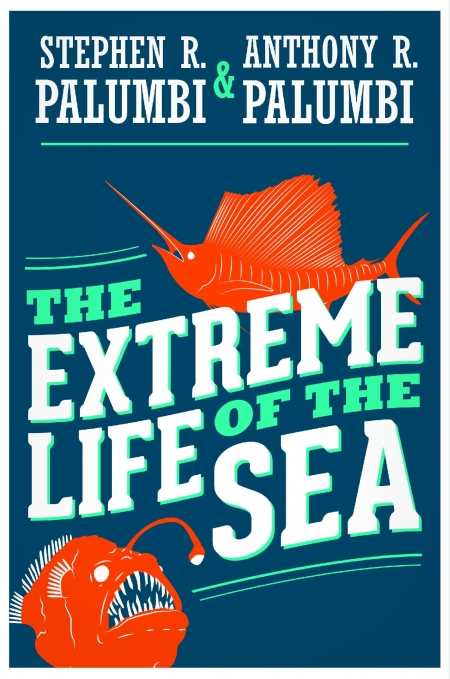It looks like you've stumbled upon a page meant to be read by our code instead of viewed directly. You're probably looking for this page.
The Extreme Life of the Sea
Life in the ocean becomes a drama with a cast of dynamic characters in this unique approach to biological diversity.
Discover the wonder and diversity of life in the ocean—no degree in marine biology required. Stephen and Anthony Palumbi have produced a book that will develop a “guiltless wonder about how wonderful the ocean’s life really is,” for the nonscientific reader.
The father and son are well matched for this endeavor. Stephen directs the Hopkins Marine Station at Stanford University. His research focuses on a wide variety of marine life, including sea urchins, whales, and corals. His 2010 book, The Death and Life of Monterey Bay, reveals how ordinary citizens can contribute to a sustainable ecosystem. Anthony, a science writer and novelist, has published in Atlantic.
One of the things that makes The Extreme Life of the Sea successful is the authors’ approach to their subject. Though packed with details, the book reads like an action-adventure novel. A whale battles a giant squid. Ocean microbes come across as more violent than characters in Game of Thrones. The bathysphere is an air hose away from being a tomb. The albatross “sips strength from the waves to power their epic migrations.”
This approach is a pleasant departure from dull textbook prose. It will delight readers who lack scientific credentials but yearn to understand the diversity of life in the oceans. The text demystifies, mystifies, and amazes. For instance, the enormity of evolution is presented simply, but the familiar horseshoe crab becomes a complicated subject. Casual observers are easily amazed by the muscularity of fast-moving fish. Have they also considered how fish are able to see and eat as they speed along?
Each chapter explores one topic: the earliest, oldest, smallest, coldest, etc., life in the ocean. A reader could dive into any one or more chapters, not necessarily in order. Chapters have titles, including a clearly stated theme, and are further subdivided into sections. This makes the purpose and direction of each chapter clear.
Rather than preach about the cost of climate change, the authors end their book on a positive note, revealing the power of individual citizens to enact change. They aim to encourage and to educate their readers. Their mission to show the interconnectedness of life may result in changes that will save sea life and human life.
Reviewed by
Geraldine Richards
Disclosure: This article is not an endorsement, but a review. The publisher of this book provided free copies of the book to have their book reviewed by a professional reviewer. No fee was paid by the publisher for this review. Foreword Reviews only recommends books that we love. Foreword Magazine, Inc. is disclosing this in accordance with the Federal Trade Commission’s 16 CFR, Part 255.
